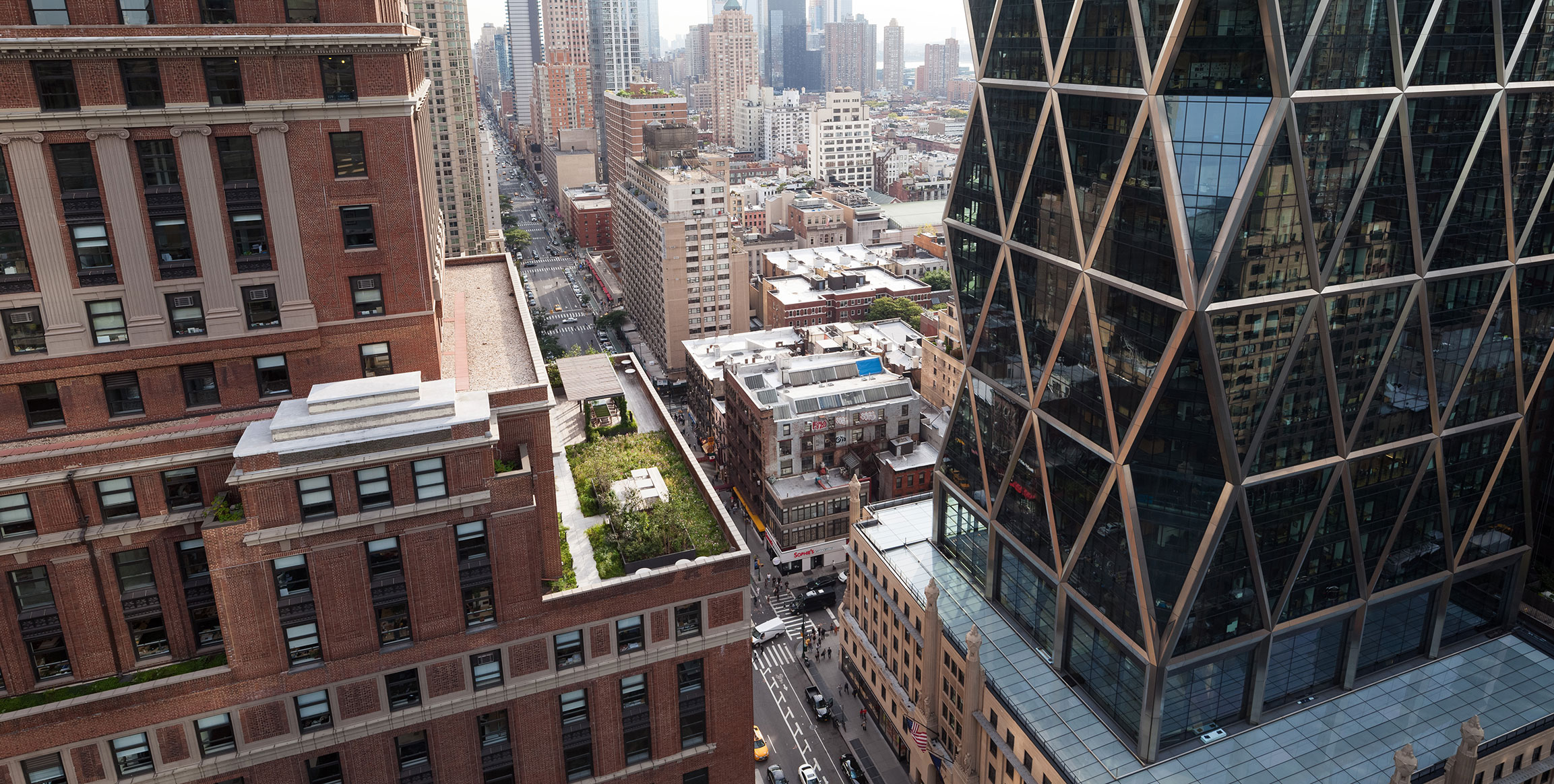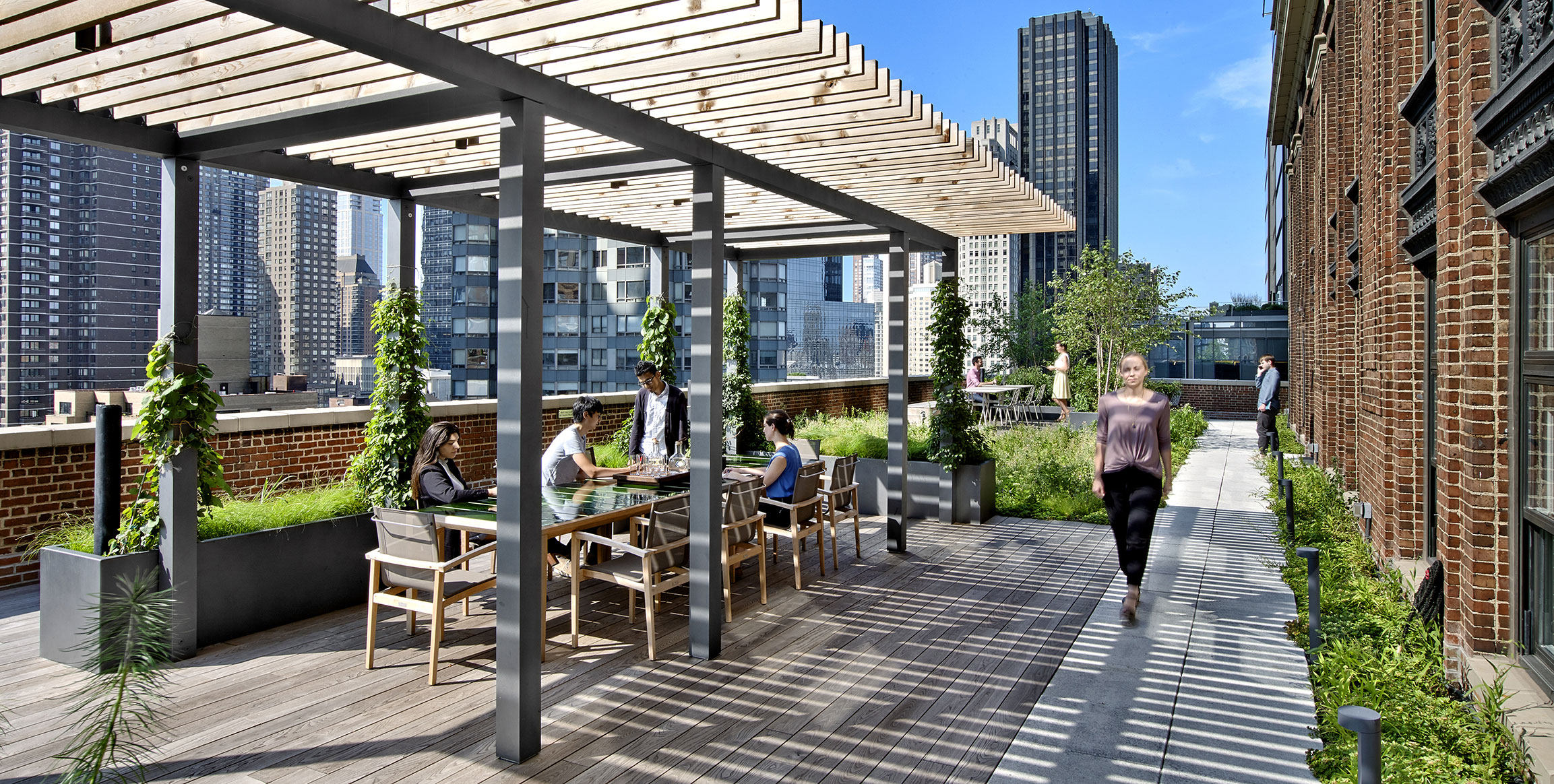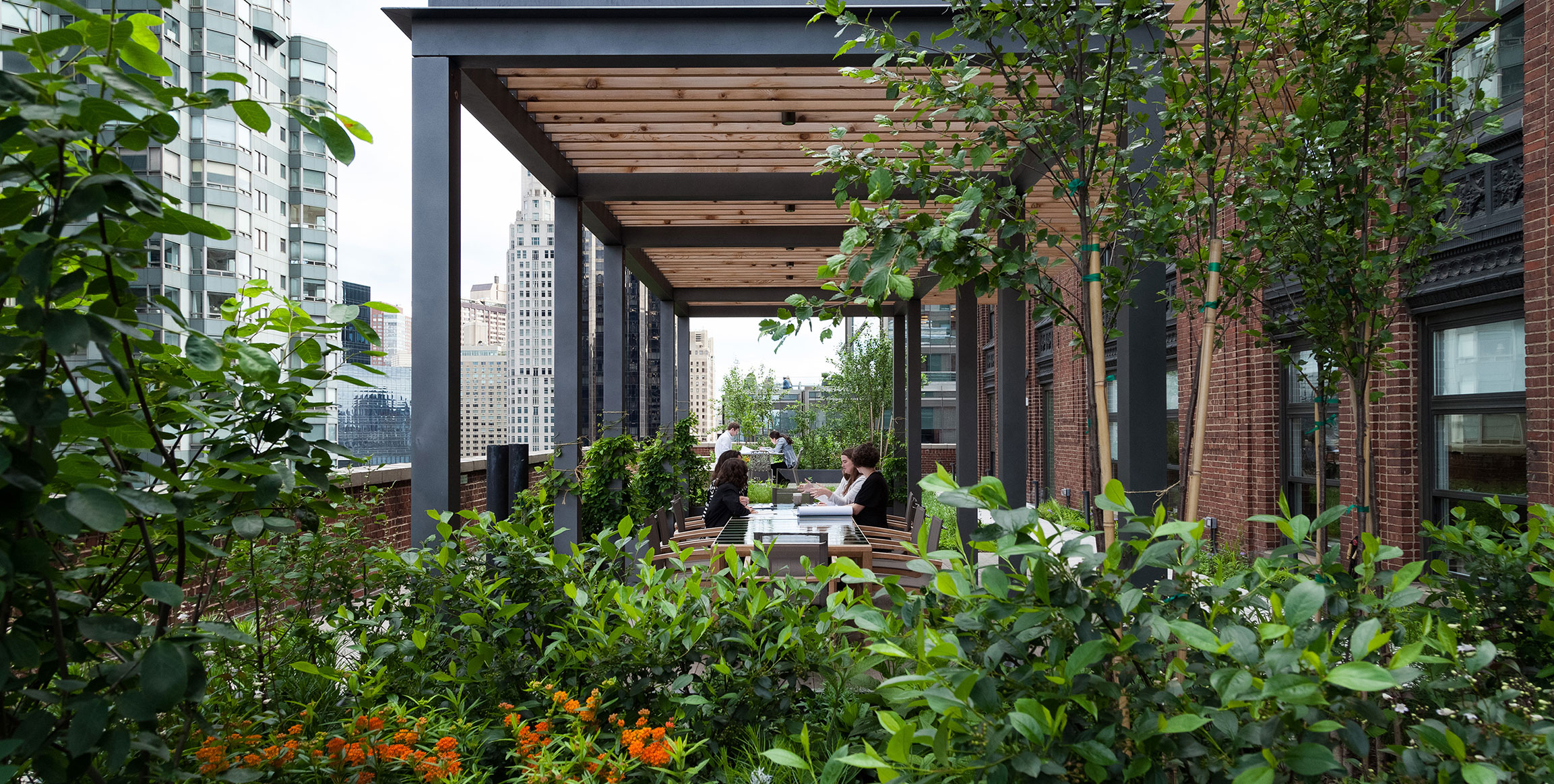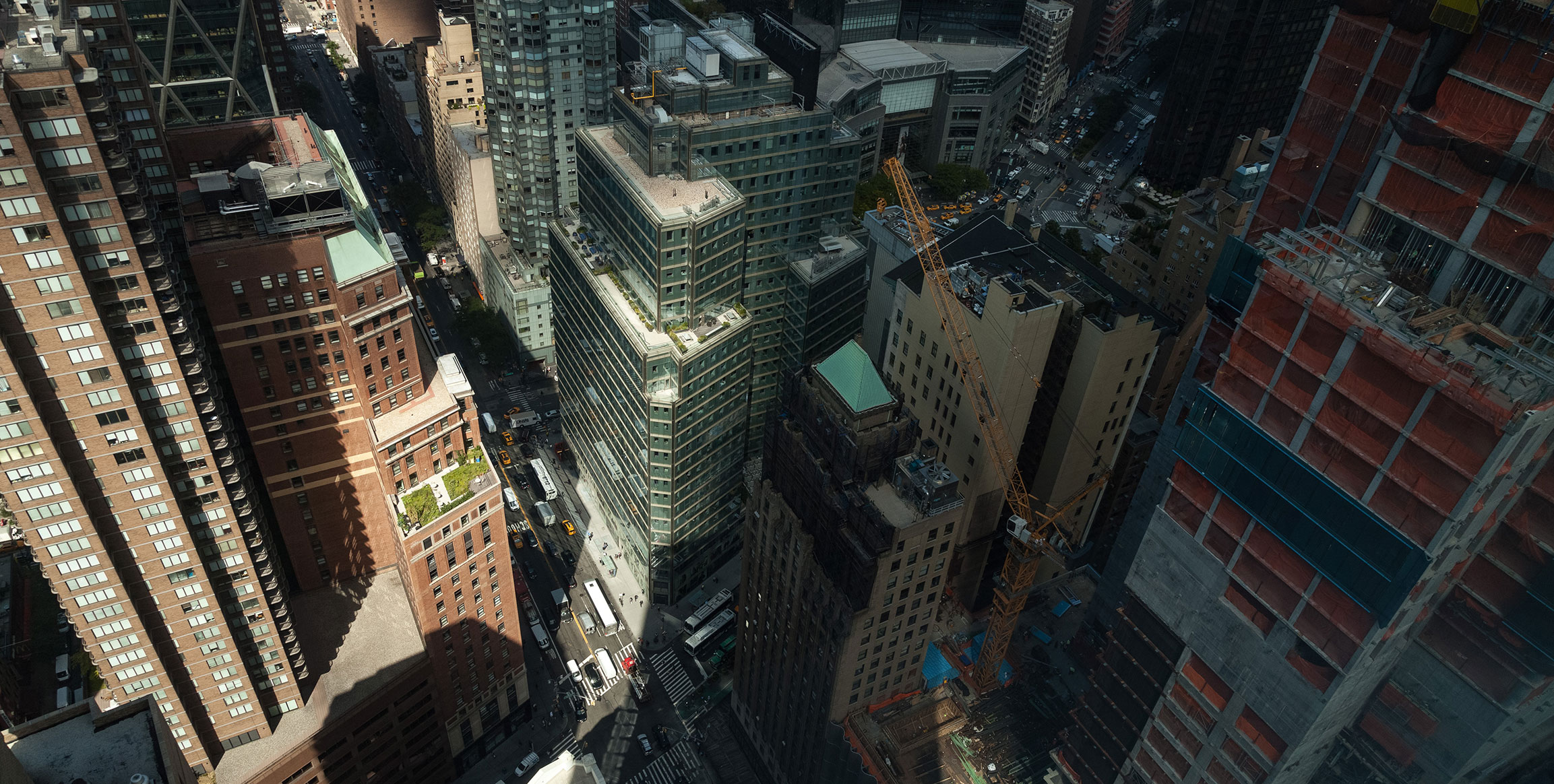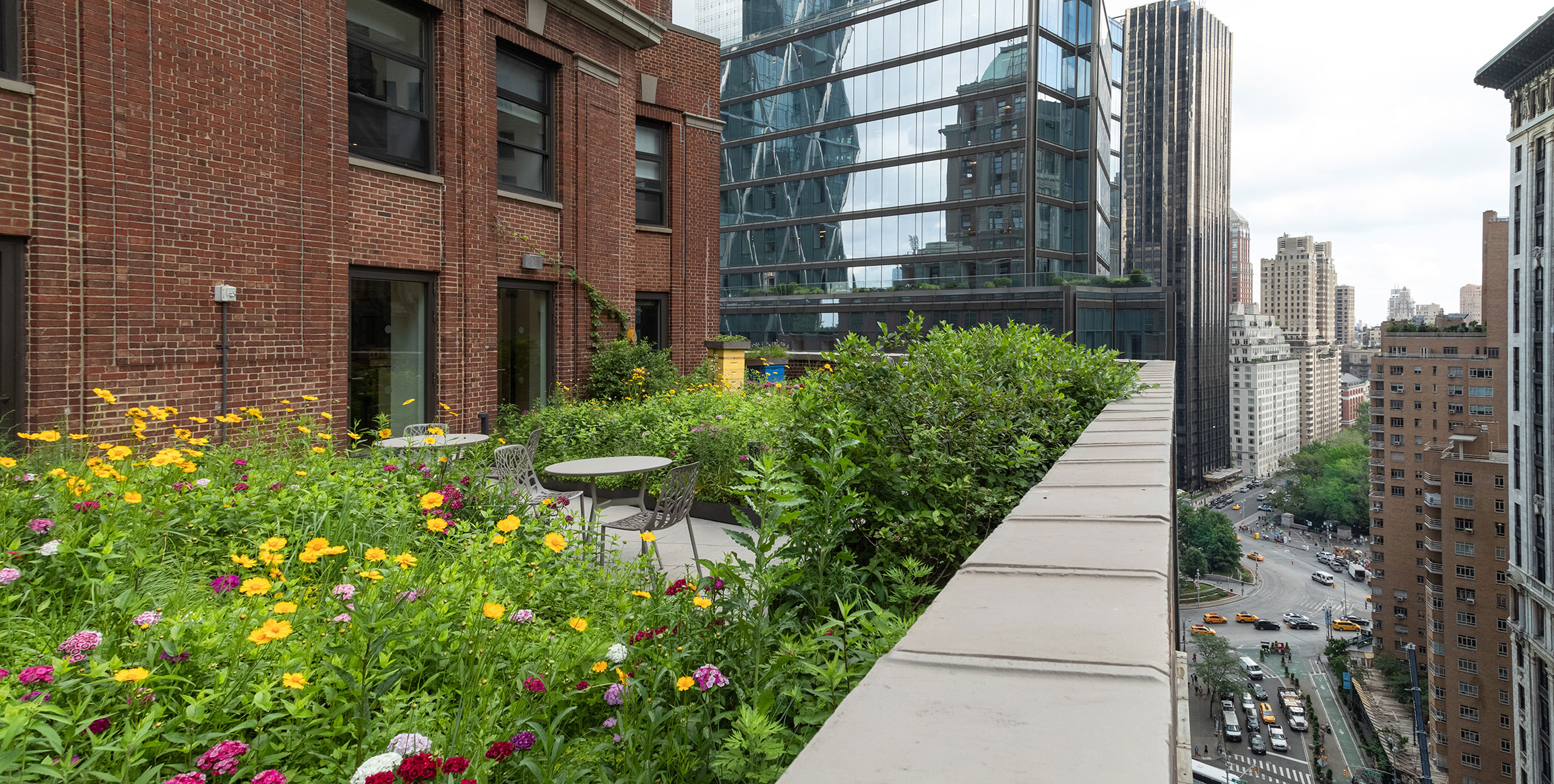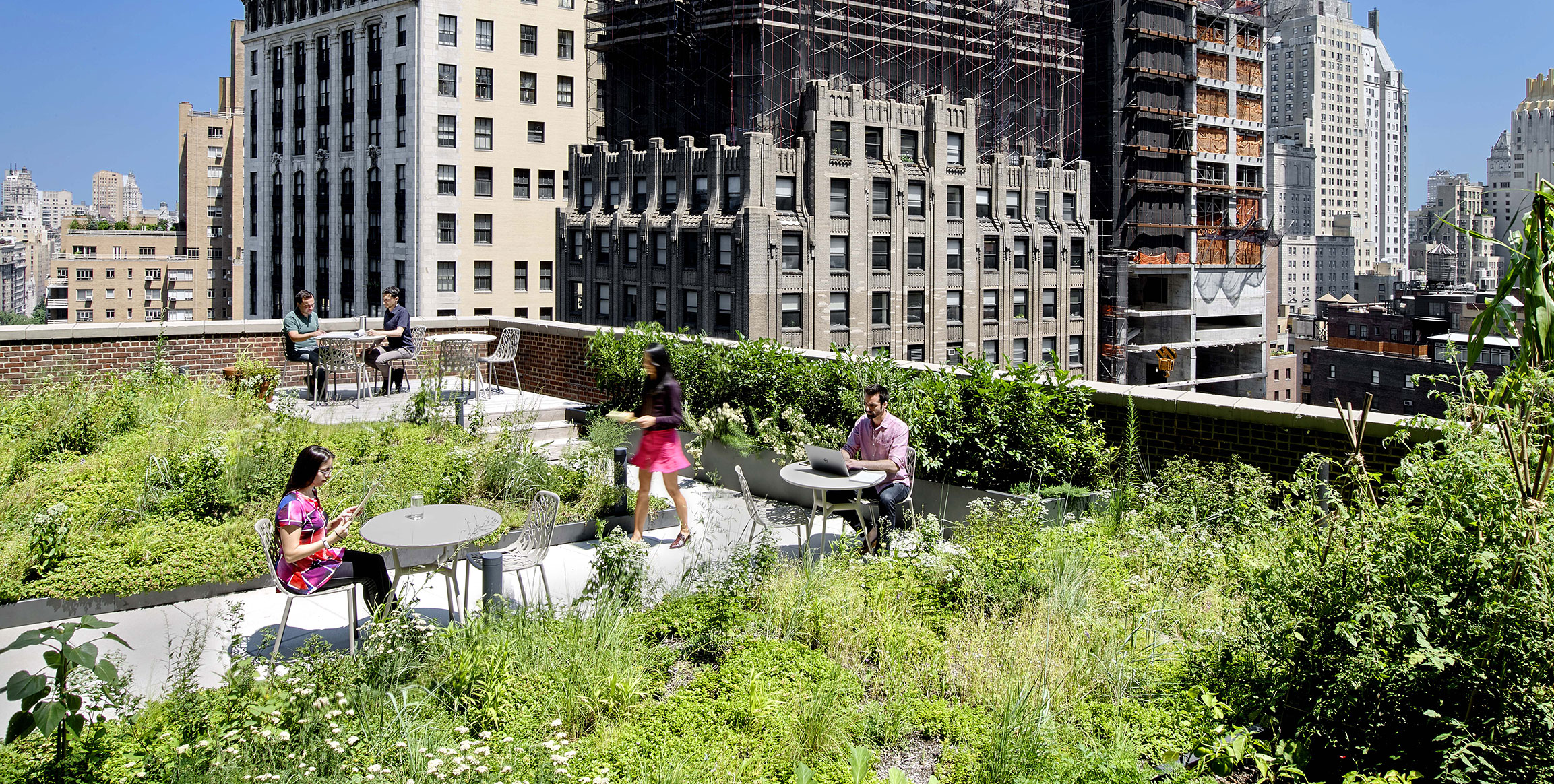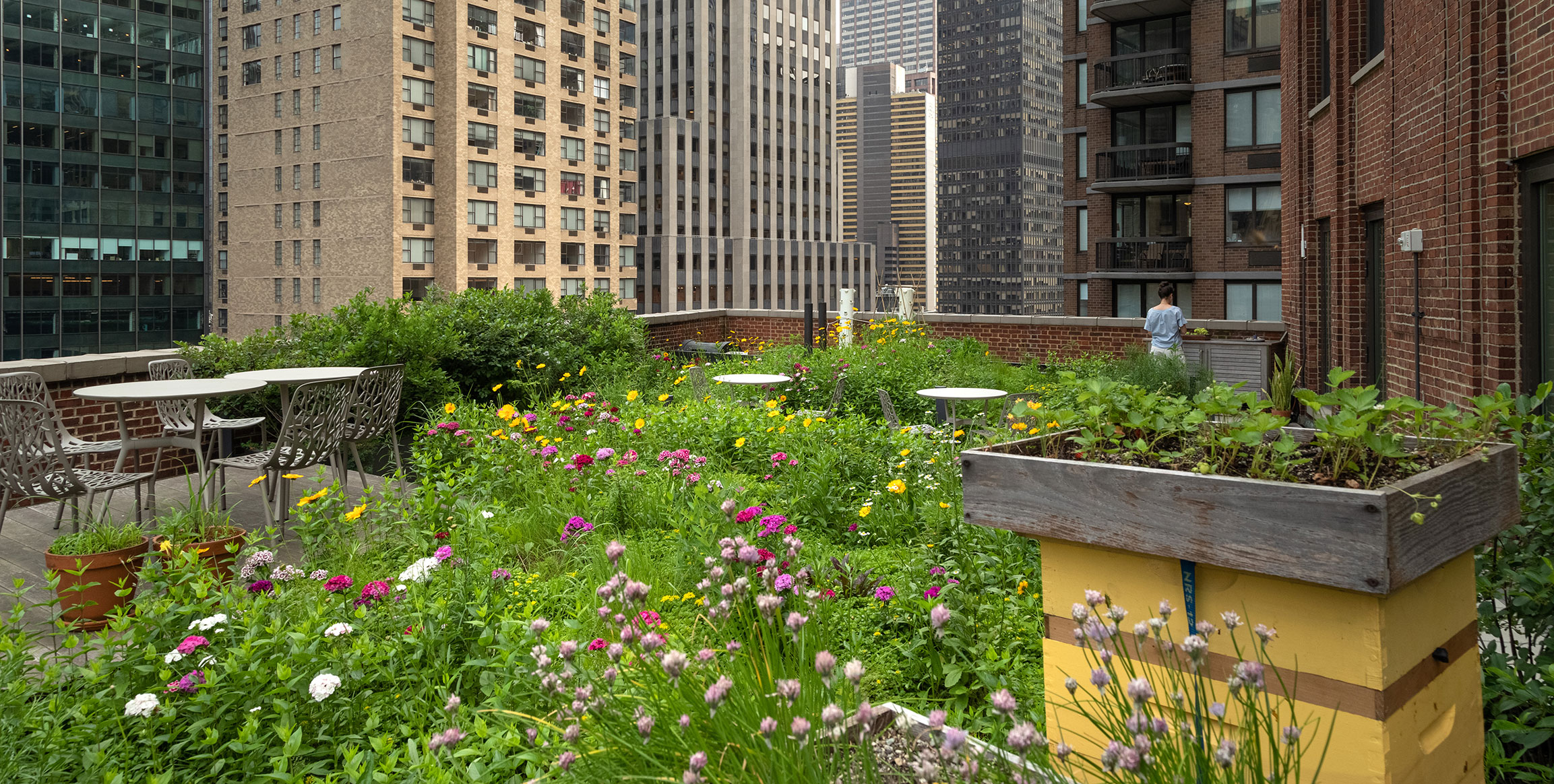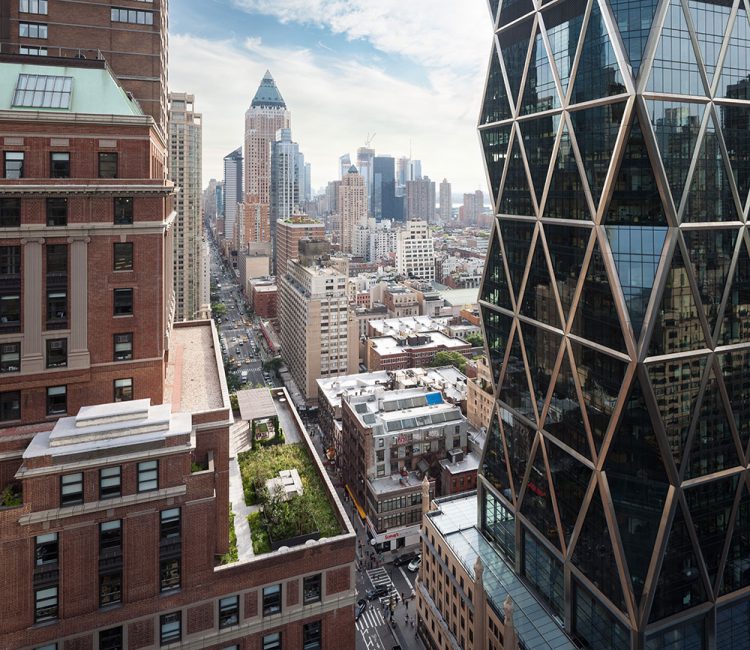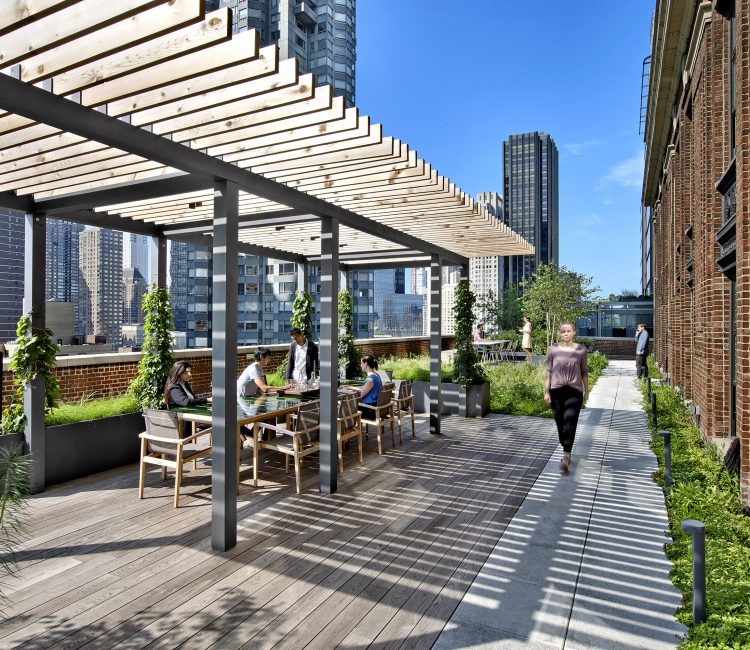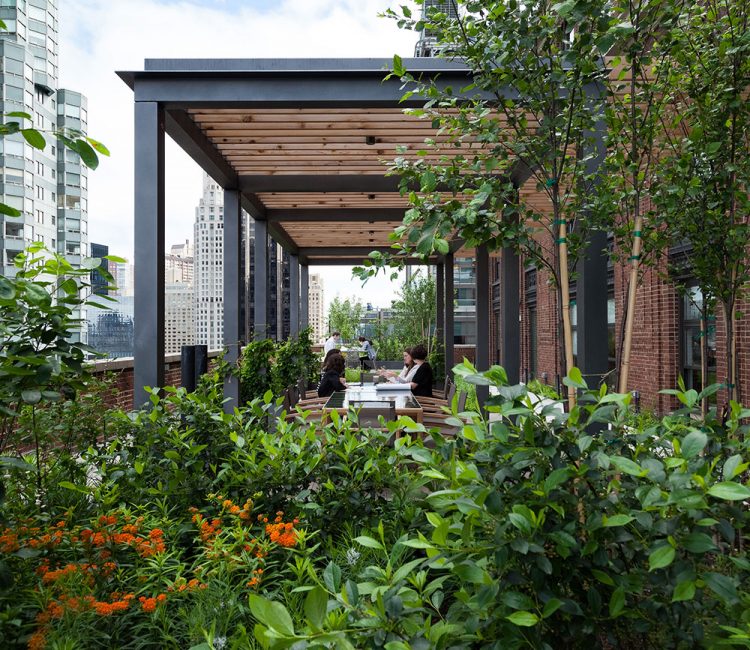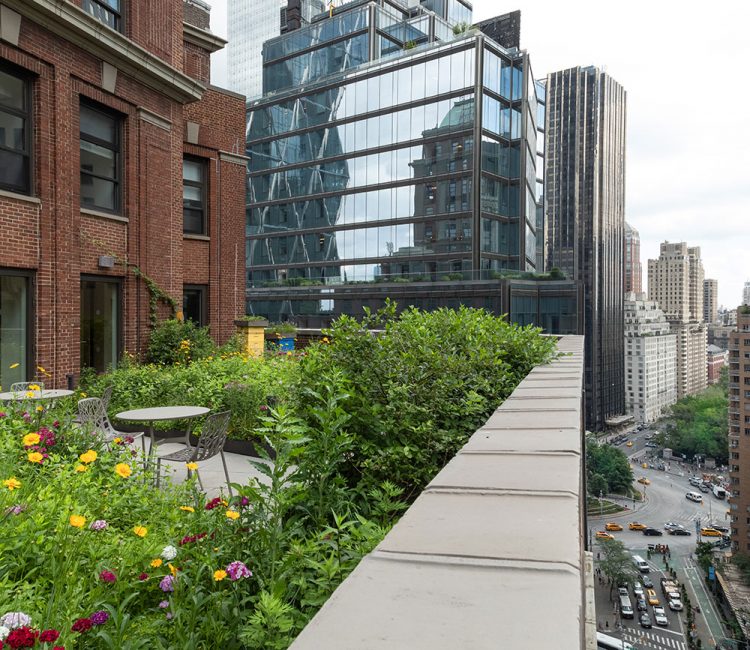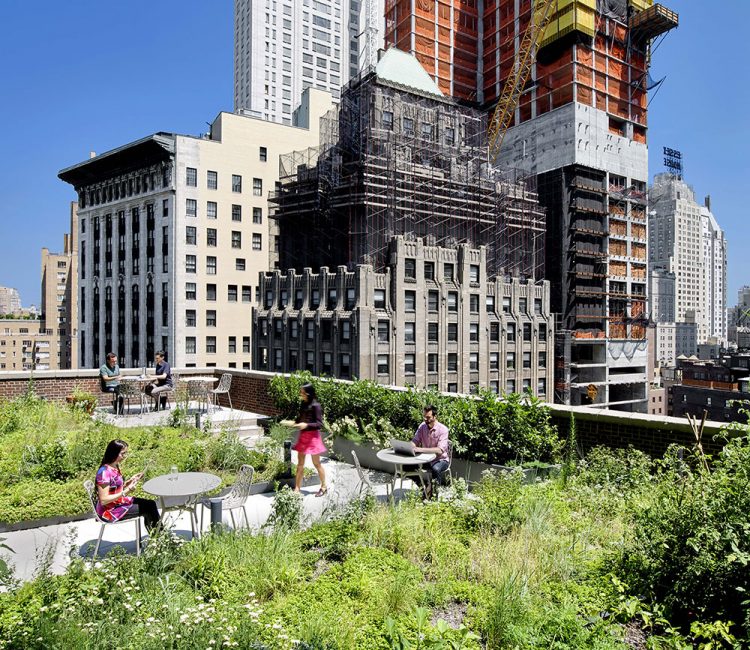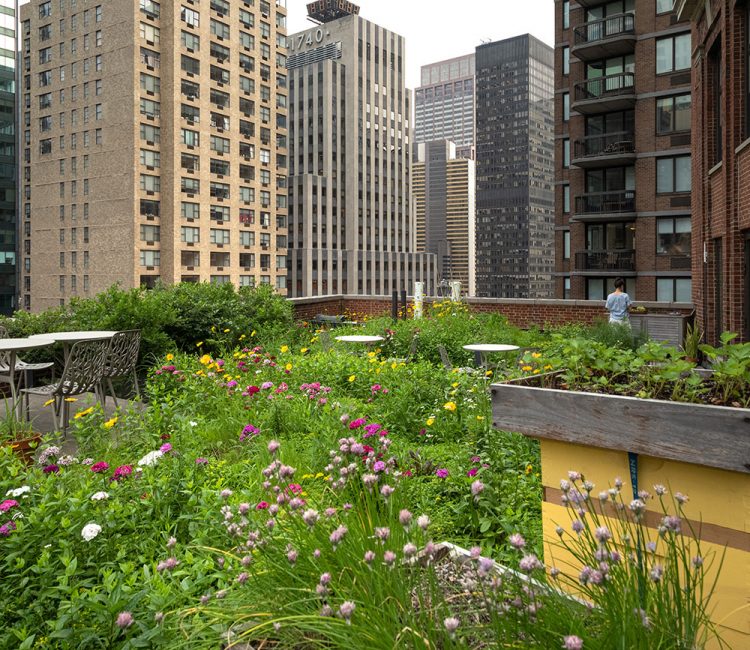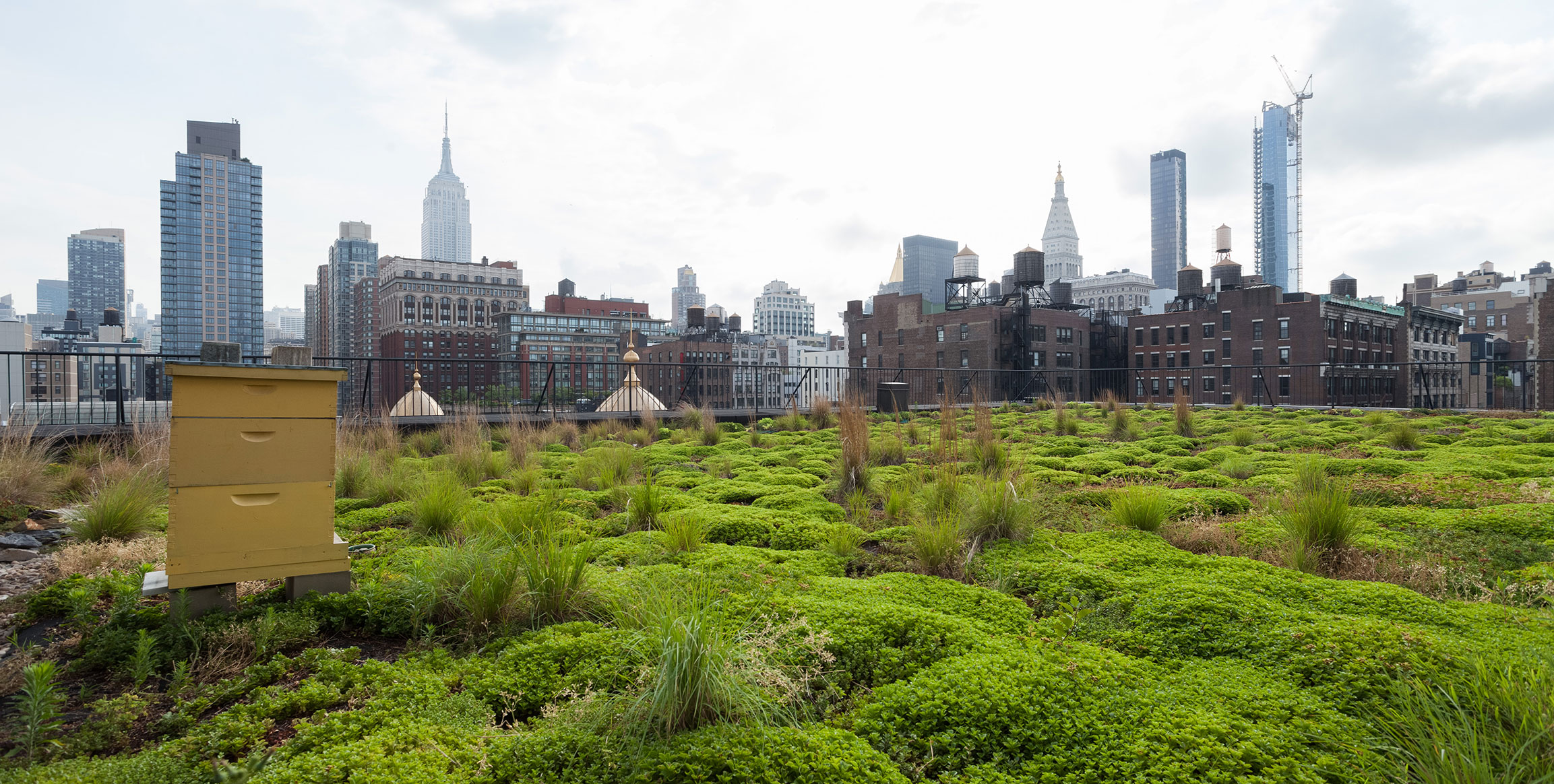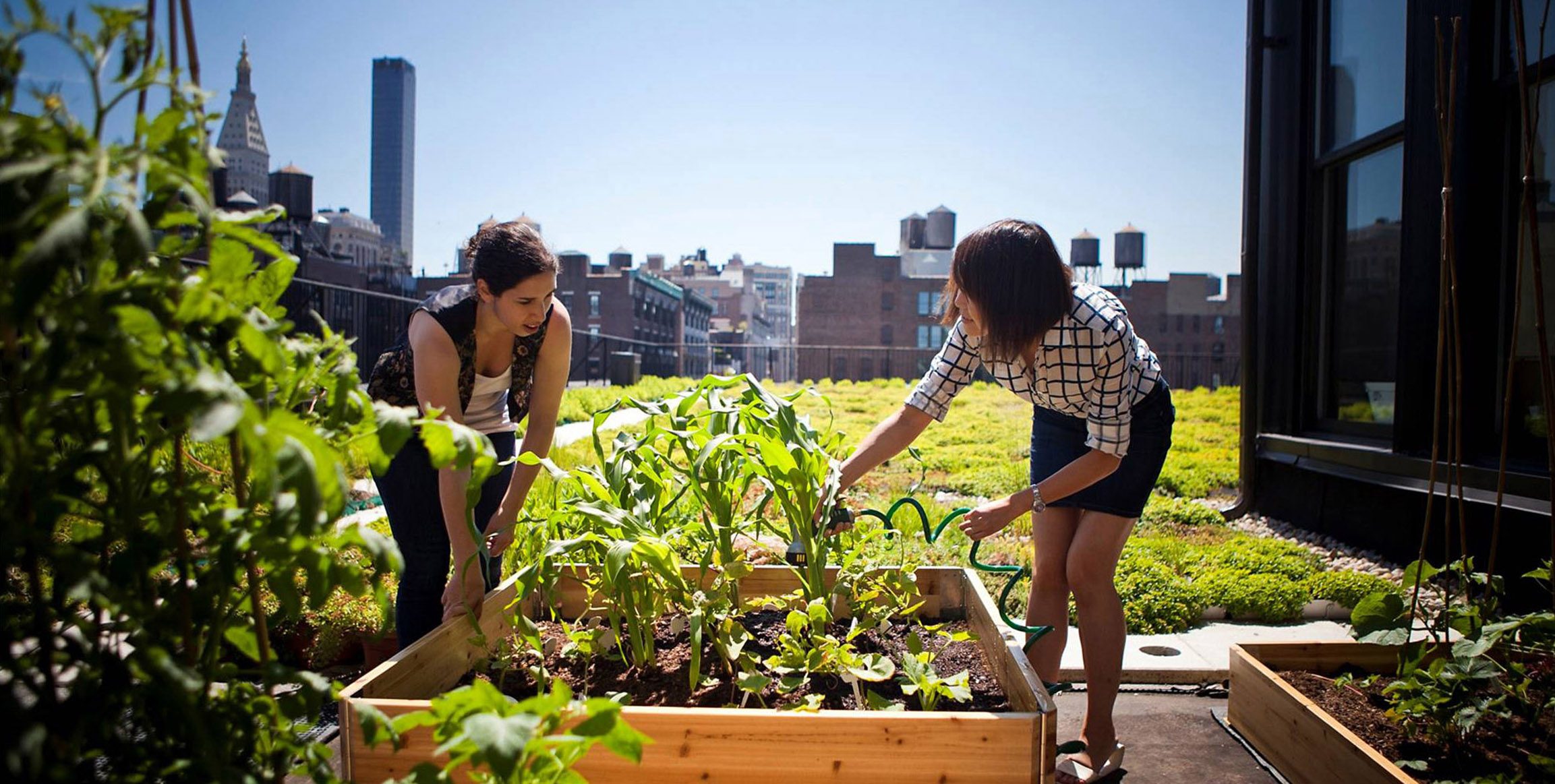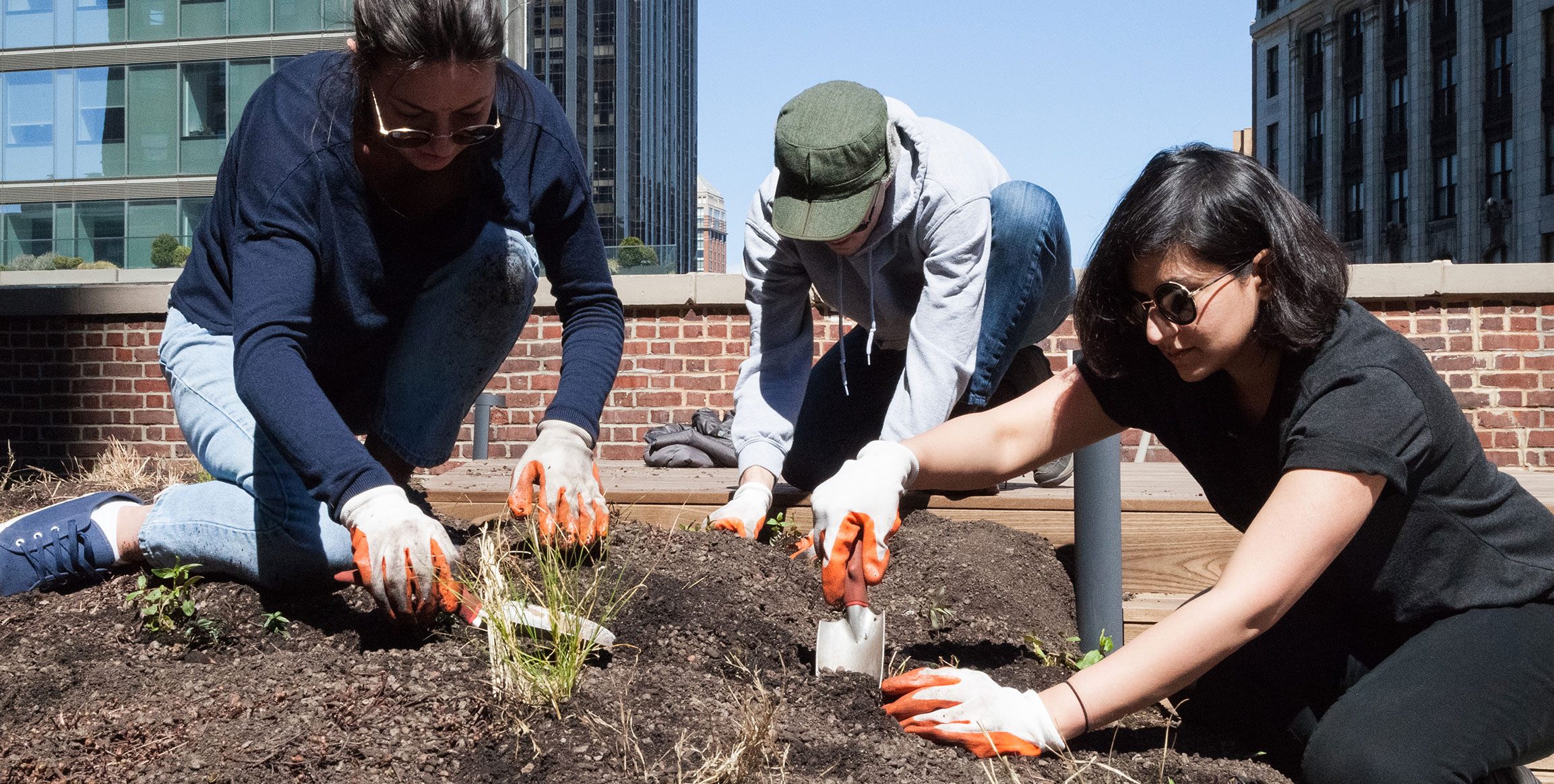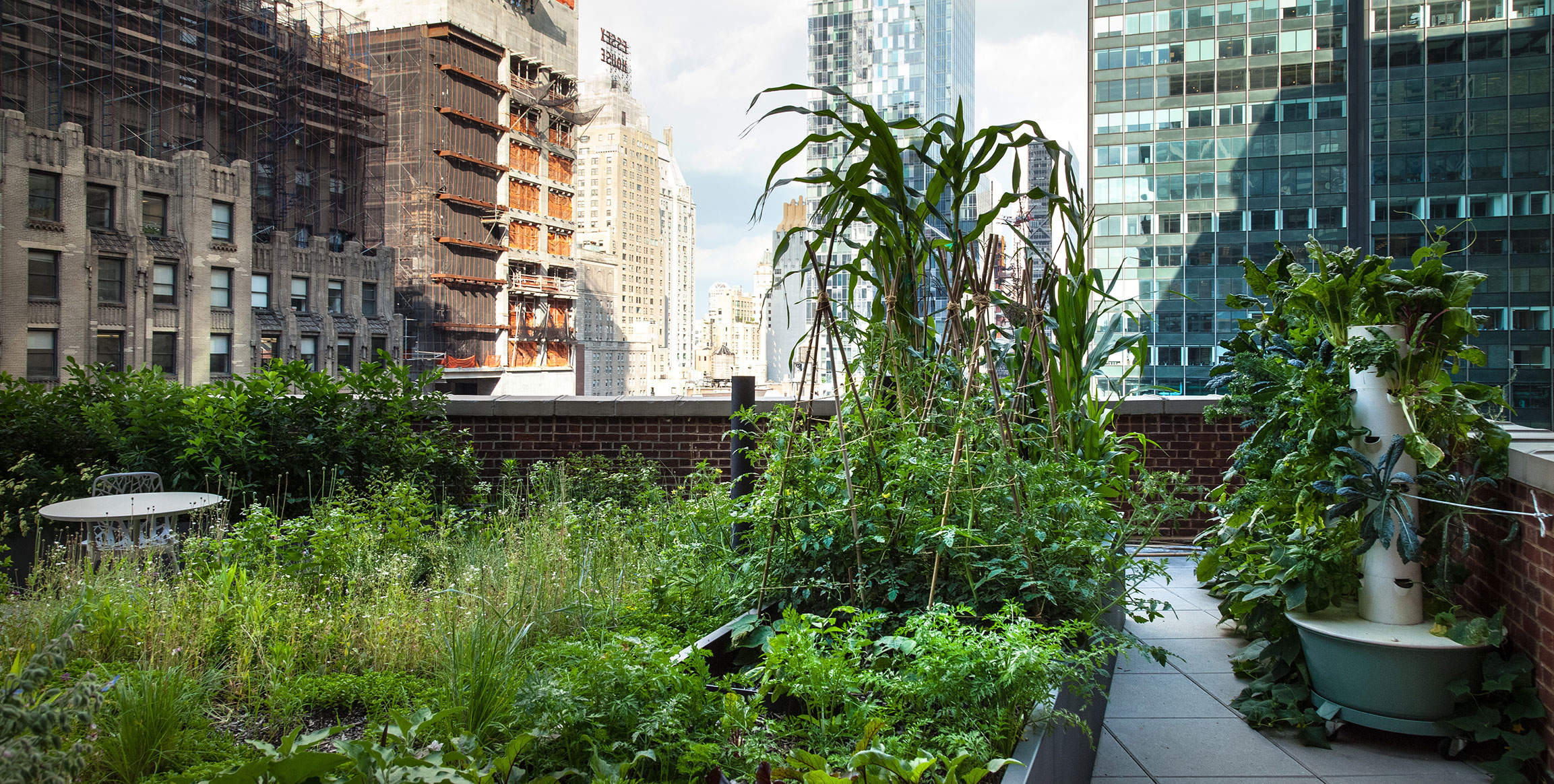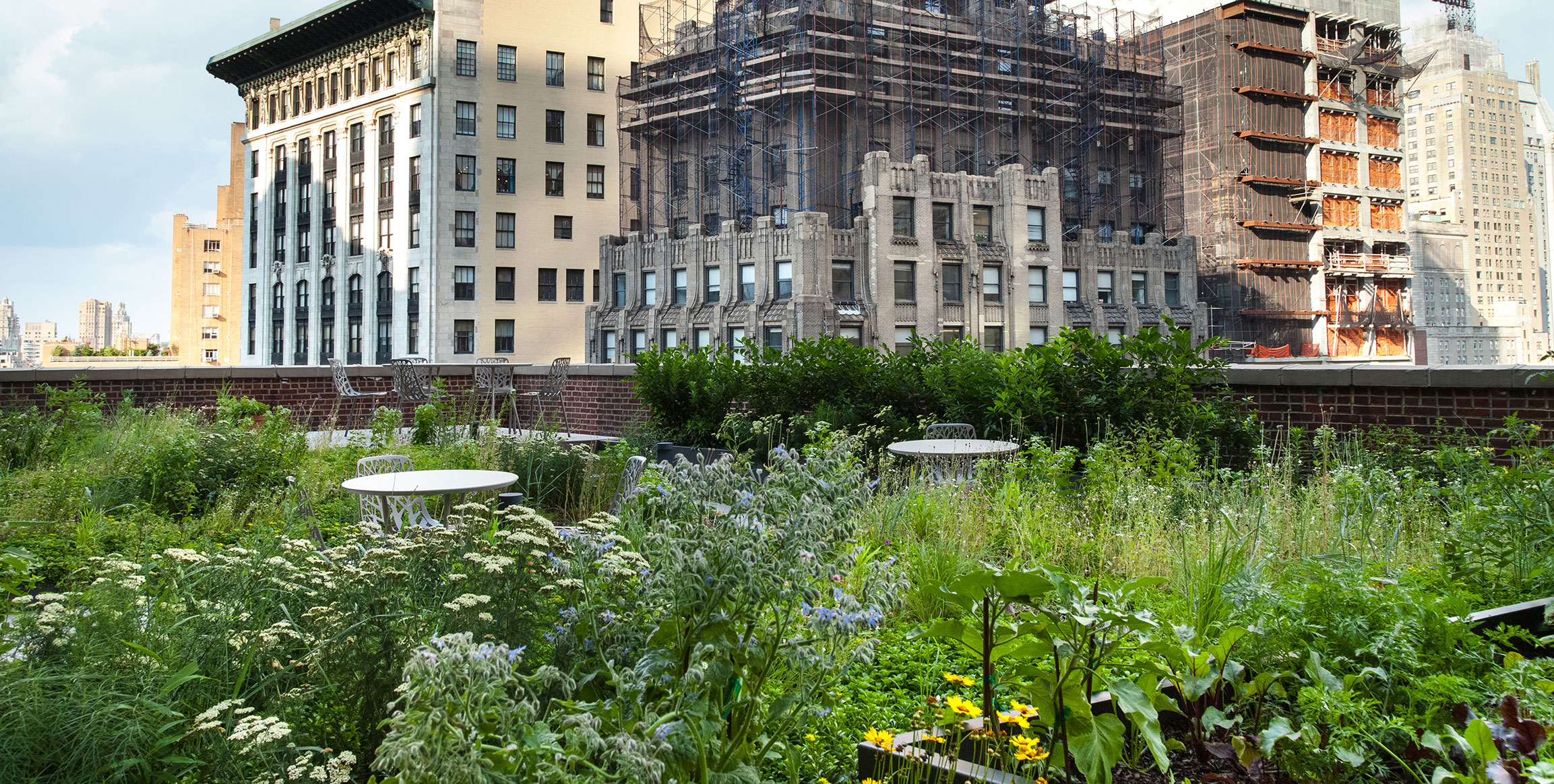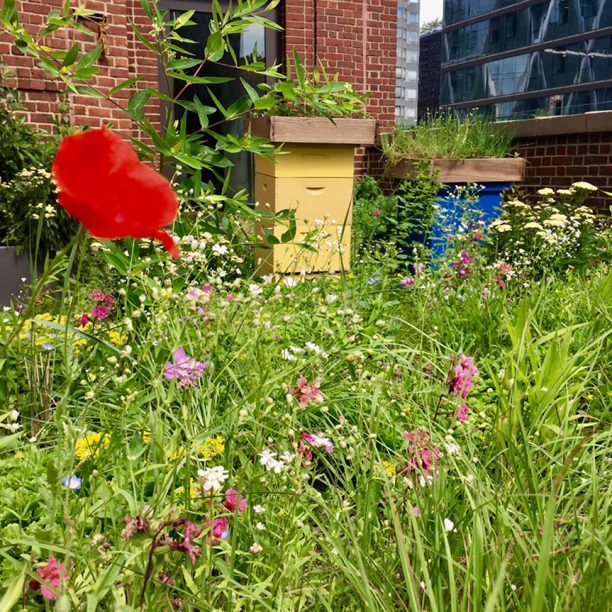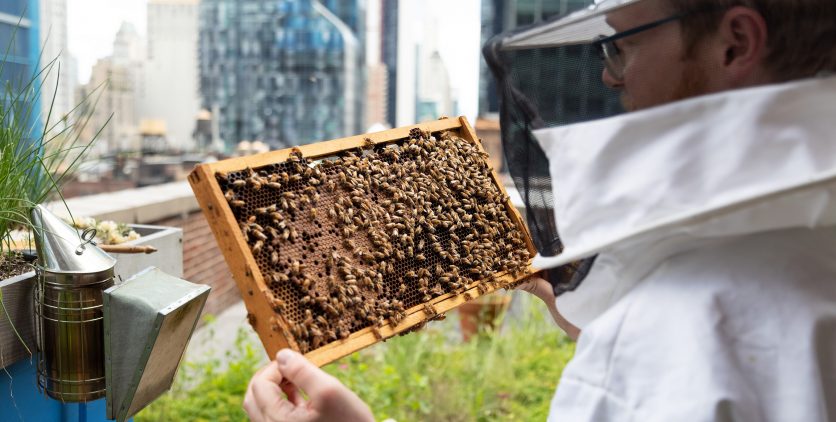COOKFOX Green Roof
New York City, like other metropolises of many millions of people, has both great environmental advantages and serious ecological impacts. While well-known for its relatively low energy use per capita and highly successful public transportation system, in the summer the city becomes a sweltering landscape of concrete, brick and steel. Its roofscape is largely a field of black tar surfaces that soak up sun and shed stormwater to the pavement below.
The field of research known as biophilia—a term popularized by E.O. Wilson and defined as “love of life” or the innate kinship that humans feel toward the natural world—explores what it means to design the built environment to foster positive connections with nature. Contact with the natural world, both literal and symbolic, has been shown to reduce stress and enhance employee health and productivity. In an office environment, biophilic design strategies can translate into reduced absenteeism and turnover, and lead to a more productive, creative work environment.
To many, restoring ecosystems to the point of supporting wildlife may seem like a lost cause in a place like New York City. However, even small areas of open space can support thriving populations of microorganisms, flora and fauna, and these oases of biodiversity help sustain larger urban ecosystems. At COOKFOX, we aspire to create green space through all our projects, doing our part to reknit the urban ecosystem and connect people to nature.
Beginning in the summer of 2006, at our former studio on the 8th floor penthouse of 641 Avenue of the Americas, COOKFOX decided to set a greener, healthier example with a roof that absorbs stormwater, fights the urban heat island effect that burdens the city’s energy infrastructure, and benefits both the local ecosystem and the human environment. Though coated in black tar and formally off-limits, the roof held great potential as a platform for promoting urban sustainability. We wanted a green roof that would be lightweight, flexible, low-maintenance and affordable, and we were interested in a flexible system that could be altered later if necessary. Green Paks, small modular units filled with a mix of expanded shale (80%) and compost (20%), offered the best options for creating a green roof in a custom shape.
Each Pak, filled with growing medium at McEnroe Organic Farm in Millerton, NY, weighs 55 pounds and measures four inches deep. The Paks were seeded by COOKFOX employees with 5,000 plants, including eight species of sedum and one talinum, chosen for their tolerance to temperature extremes, sun and wind exposure, and long periods without rain. The Paks were laid down over a half-inch drainage mat, which also acted as a root barrier protecting the roof membrane below. To foster the greatest biodiversity and resilience in the new ecosystem, the team mixed the seedlings so that no two individuals of the same species were planted next to each other.
Almost immediately after installation, we discovered insect life returning to the green roof. Dragonflies were the first to appear. In early September, the first bird was spotted. Later, hawks were noticed using the roof railing as a perch, and throughout the fall, monarch butterflies often visited during their semiannual migration. Grasses and other plants began to appear, seeded by the wind and birds visiting the rooftop, and we quickly discovered the value of seeing plants moving in the breeze, a sight proven to lower the stress hormone cortisol.
As an integral part of our new green roof experimentation, we devoted a corner of the roof to a vegetable garden and apiary. There, we planted the three sisters—corn, beans and squash—as well as tomatoes, peas, root vegetables, herbs and flowers for our bees and other native pollinators. Interested in exploring vertical, soilless growing systems for their efficiency and suitability for rooftops with limited space, we acquired three aeroponic Tower Garden systems. Each tower needs only 10% of the space and uses as little as 2% of the water as traditional growing methods, and they have been highly effective for growing our cucumbers and leafy greens.
In January of 2017 we moved to our current office on the 17th floor of the 1921 Fisk Tire building on 57th Street between Broadway and 8th Avenue. A crucial part of the selection process was finding space with prominent, accessible outdoor areas to continue and enhance our green roof exploration. The full-floor studio features three terraces, the east and west accessible and the north home to a viewing garden running the length of the studio.
Although we were moving almost 40 blocks north, we wanted to continue the legacy of care for our green roof, which had flourished for 10 years. The Green Pak growing system was designed for flexibility and ease of movement, which we, with the help of Brooklyn Grange, put to the test by picking up, loading into trucks and rearranging over the three new terraces. Despite a difficult move through ongoing construction in the dead of winter, the sedum came back stronger than before and continues to thrive in its new environment.
In designing our new terraces, we wished to push our experimentation with green roofs, urban planting and gardening to new heights, creating true urban green oases in the heart of New York City. We worked with Brooklyn Grange to help design our new planting scheme which includes serviceberry, blueberry and chokeberry bushes, as well as river birches and climbing vines in deep planters. We also seeded the Green Paks with native grasses and pollinator-friendly wildflowers to create fields of greenery swaying in the breeze. The new terraces have become their own small ecosystems, fostering an ever-growing array of insects and birds, including dozens of native pollinators, butterflies, starlings, robins, red-tailed hawks, ladybugs and grasshoppers.
In our new space, we increased the size of our vegetable bed to 80 square feet, and carefully placed it and the aeroponic towers in direct view of our harvest kitchen, offering employees and visitors a unique connection to urban food production. Employees harvest vegetables and herbs throughout the summer, when all the ingredients for a salad are just through the terrace door. We grow a wide range of food, focusing on heirloom vegetable varieties. Healthy growing methods, such as crop rotation and pest control with beneficial insects, keeps the garden and terraces a safe, healthy place for birds, butterflies, bees and native pollinators. We keep the soil healthy through an internal composting program. Garden waste, employee’s leftover lunches and coffee grounds are placed in a composter through the summer and fresh compost spread on the garden beds every spring. This methodology creates a nearly closed-loop agriculture system, from compost, to garden, to table, and back to compost.
Very much a living horizon, the terraces break up the urban backdrop of supertall buildings along 57th Street. The restorative green planes are a constant presence in the office, drawing the outside environment into the sightlines of the workplace. The terraces also mark the changing seasons and the time of day. Employees are naturally more aware of dry spells, frost snaps and other weather impacts on the micro-ecosystem out their windows. In addition to illustrating ecological concepts to clients and visitors, the green roof is a defining feature for the entire office. In a city where daily contact with open space is often a rare amenity, even small patches of greenery can start knitting the urban ecosystem back together, promoting occupant health and well-being and giving living things a place in the human environment.
